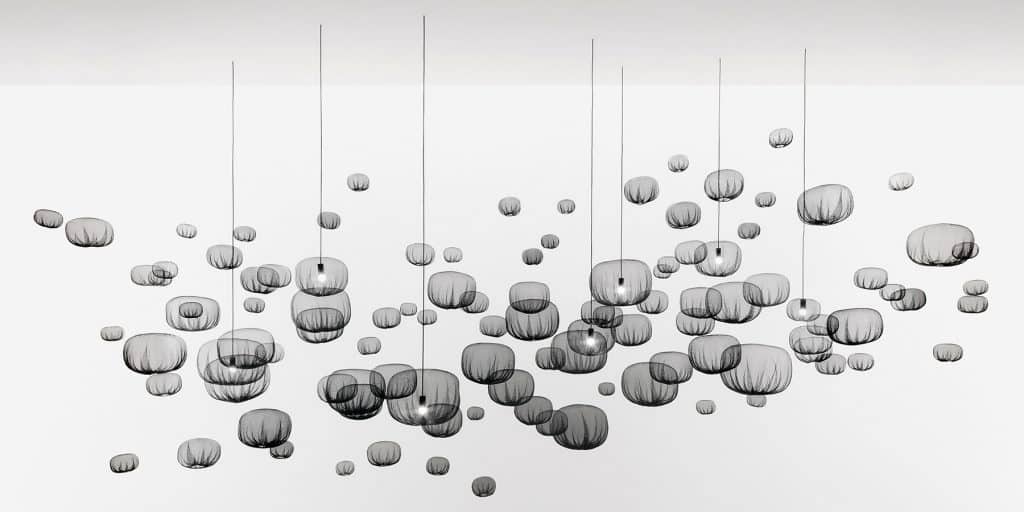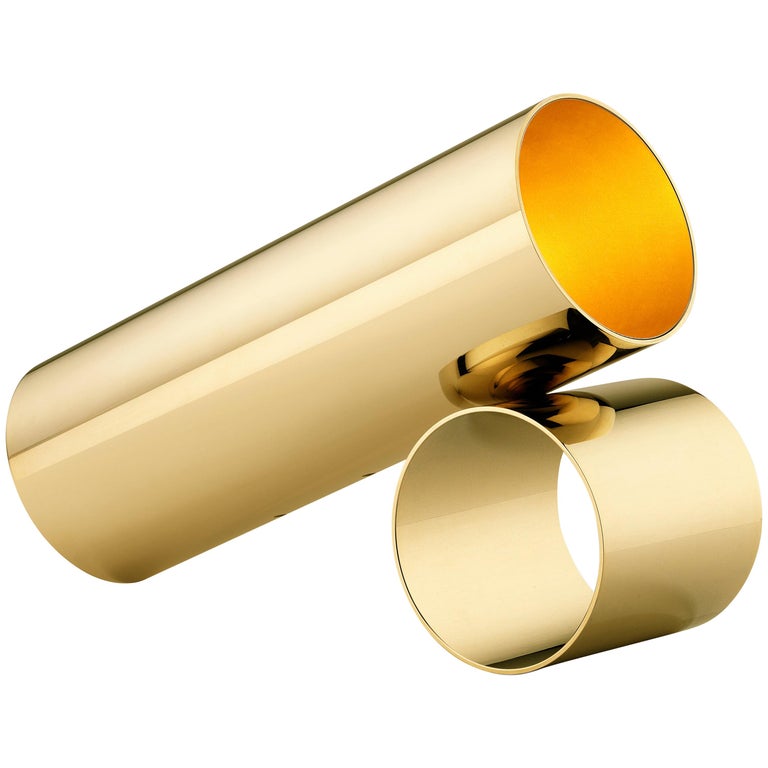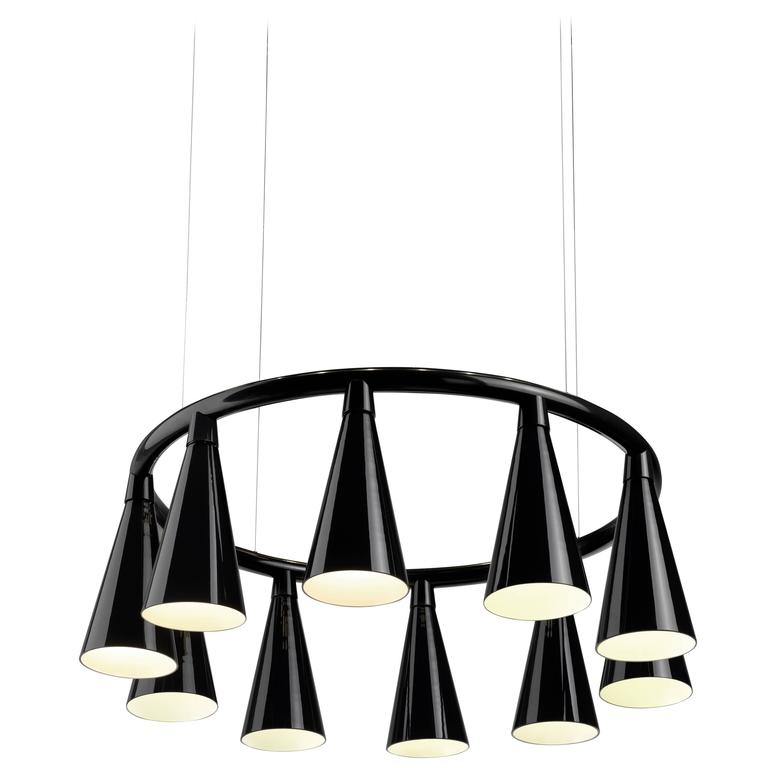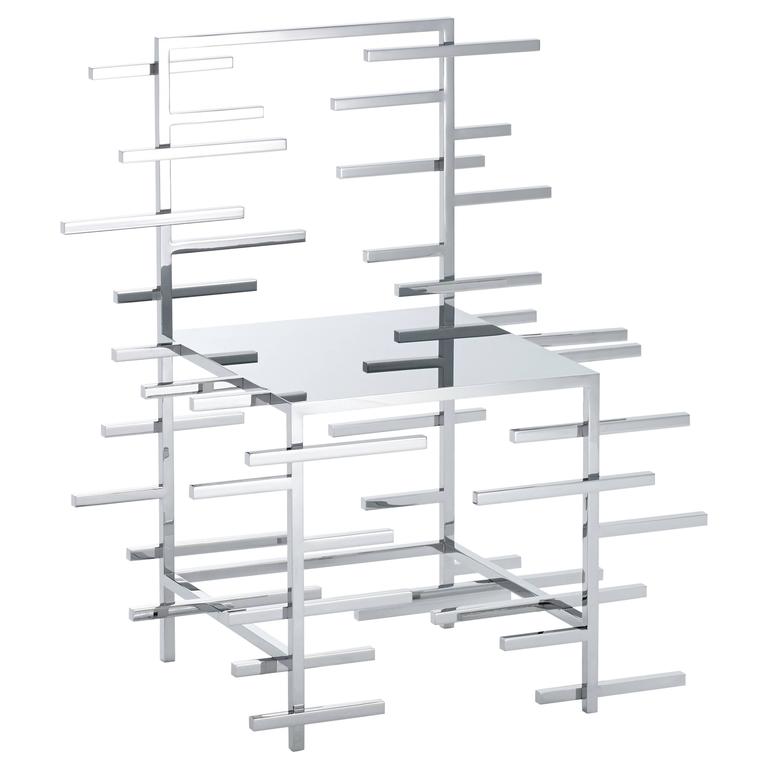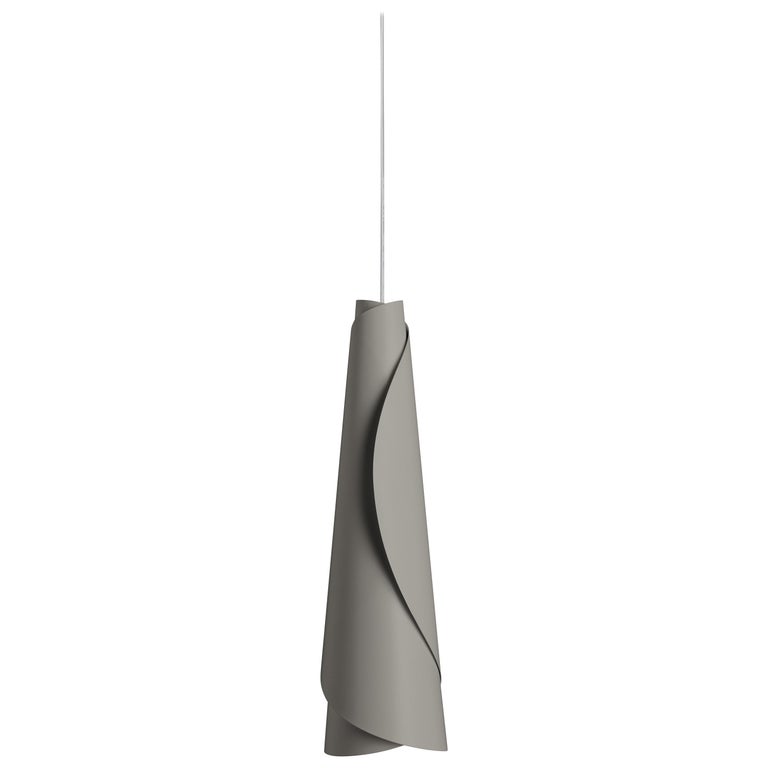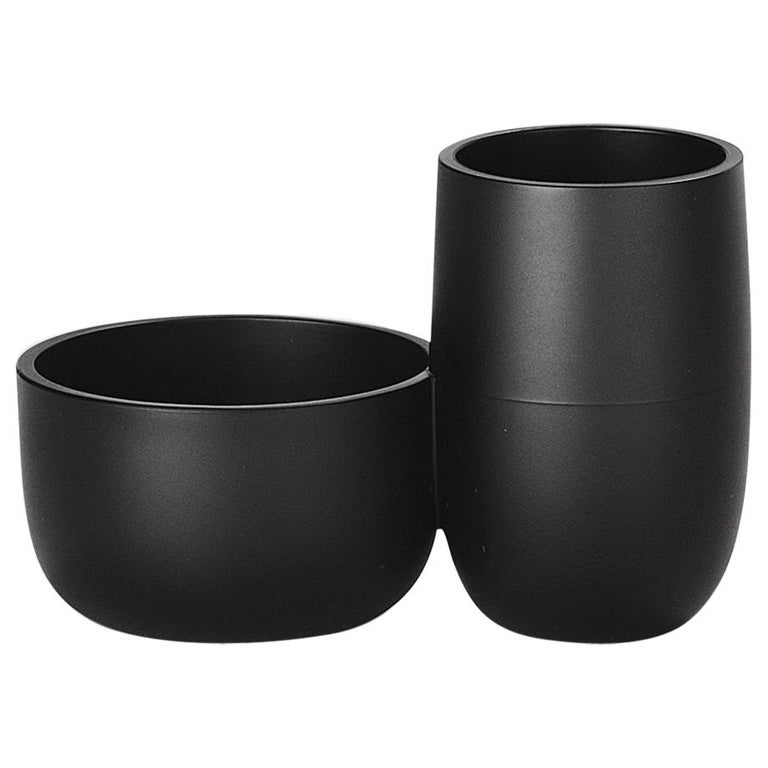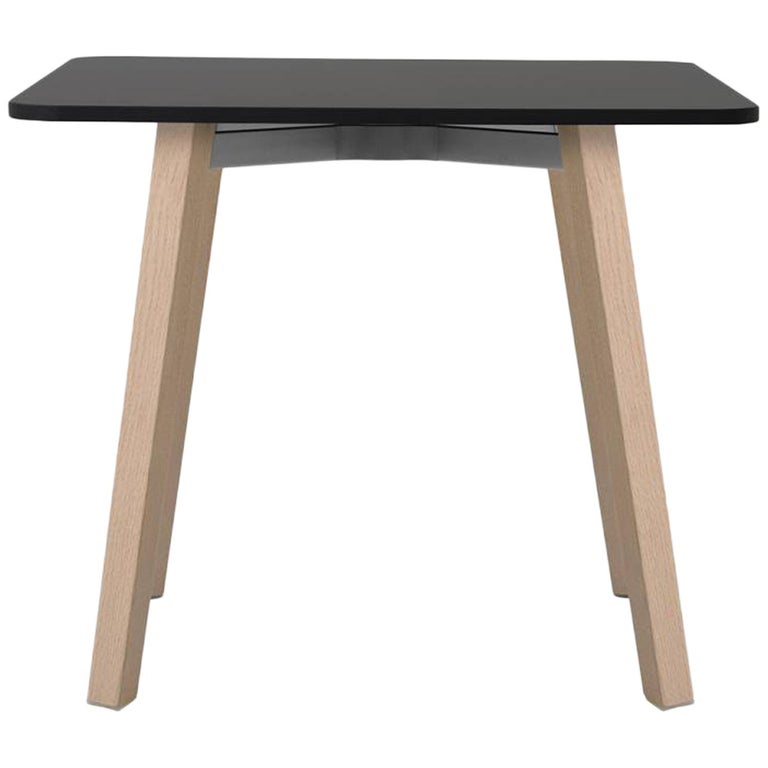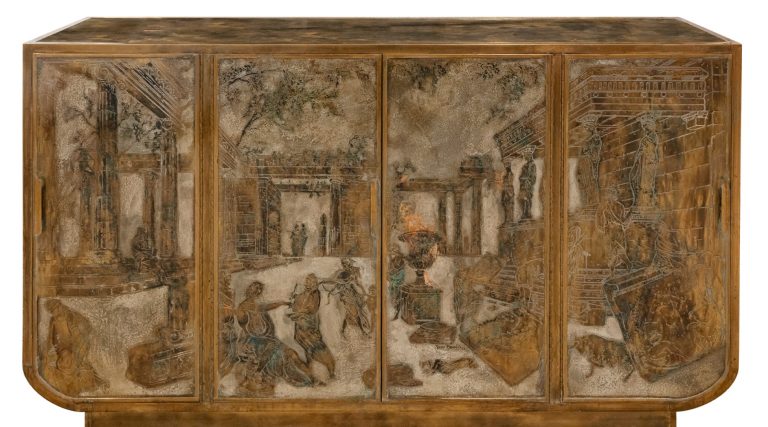
July 14, 2019The studio Nendo, cofounded by designer Oki Sato (above), is the subject of an eponymous monograph published by Phaidon (portrait by Masayuki Hayashi). Top: The Farming-Net series includes flower vases, bowls, lamps and even a table, all made using a type of agricultural mesh (photo by Hiroshi Iwasaki).
Some pieces of contemporary furniture try to command attention with statement-making forms, while others aim to seduce with pared-down, meticulously detailed perfection. Nendo is remarkable in its ability to blend these two seemingly disparate qualities in objects that are simultaneously provocative and beautiful in their simplicity. And this ability has made the Tokyo- and Milan-based studio one of the most sought-after design firms of the moment.
Nendo is best known for its expansive portfolio of furniture and accessories designed for such luxury makers as Baccarat, Bisazza, Boffi, Cappellini, De Padova, Emeco, Flos, Foscarini, Fritz Hansen, Kartell, Lasvit, Louis Poulsen, Moroso and Swarovski, as well as for the one-off and limited-edition pieces presented by galleries like New York’s Friedman Benda. But as the weighty new 512-page monograph Nendo (Phaidon) illustrates, its range is much broader.
Nendo’s full oeuvre runs the gamut from product packaging for such brands as Coca-Cola and Kenzo to large-scale urban-planning and architecture projects, including Tenri Station Plaza CoFuFun, which populated the space in front of a Japanese rail terminal with a series of conical pavilions, turning it into a sort of urban playground for people of all ages.

Left: Created for the Illoiha fitness club in Tokyo’s Omotesando fashion district, this climbing wall combines gym workout with high design (photo by Daici Ano). Right: The Cabbage chair — perhaps Nendo’s most famous design — is crafted from the rolls of paper used by couturier Issey Miyake to make his signature pleats (photo by Masayuki Hayashi).
Whatever the undertaking, the studio’s approach remains the same: embodying lighthearted insights into the human experience in minimalist forms and details. Nendo’s Gaku collection, for the lighting company Flos, for instance, is based on a simple cup-shaped lamp in a square frame, which can be personalized and changed over time by adding magnetic accessories, including a bookend, mirror, vase and bowl, making it almost as playful as a grown-up dollhouse.
The now iconic Cabbage chair, Nendo’s most recognizable design, offers a whimsical way to deal with trash from the fashion industry. A fat roll of discarded paper used in the production of Issey Miyake’s pleated fabric is simply cut down the middle and its individual layers peeled open to create a seat.

The shape of the Hanabi lamp changes as the light bulb heats up, causing the “petals” to open. The piece’s name is the Japanese word for fireworks, whose literal translation is, aptly, “flowers of fire.” Photo by Masayuki Hayashi
“I believe design should make people happy while solving small inconveniences in our daily life,” says Nendo cofounder and chief designer Oki Sato, who has described his work as a search for aha moments in everyday experiences. “Hopefully, people who see our work may slightly smile.”
According to Italian architect and Memphis Group member Michele De Lucchi, the studio is succeeding. “I have a deep admiration for Oki Sato,” he writes in the foreword to Nendo’s new monograph. “His Nendo studio has perfectly absorbed the message of daring, freakish fancy and revolutionary desire delivered by Memphis. But also that of its immediate successor, the minimalist phenomenon and its search for purity, essentiality and dematerialization.”
The firm’s dedication to simplicity is also intended to help its creations speak to people from vastly different backgrounds. “Simplicity breaks emotional barriers, enabling universal communication beyond culture and nationality,” says Sato.
Judging from the numerous international companies who turn to Nendo for design help, that approach resonates. “Nendo convincingly brought Japanese design into the twenty-first century,” says Friedman Benda’s Marc Benda, who has been exhibiting the firm’s work for more than a decade. “There is the formal component — it is very strong design that he produces — but there’s also the emotional component, so people relate to it.”
It wasn’t always evident that Sato would spend his life finding subtle surprises in tables, lamps and chairs. He was born in Toronto, where his father worked for Pioneer Electronics, and moved with his family to Tokyo when he was 11. He studied architecture at Waseda University but found the program a little too narrow and rigid for his liking.

The dividers in Nendo’s Tokyo offices near the Meguro River, which the company occupied from 2008 to 2015, were designed to look like pieces of fabric draping down from the ceiling. “These enclose the various spaces more than the screens and booth dividers that one might usually find in an open-plan office do,” the book notes, “but less so than actual walls would.” Photo by Daici Ano
After graduating, in 2002, he traveled with friends to the Salone del Mobile in Milan and stumbled into the biggest aha moment of his life: He realized that architects could do more than design buildings — they could also design furniture, lighting and other objects. And the architects at the fair appeared to be enjoying plenty of creative freedom while doing so.
Upon returning to Tokyo, he founded Nendo, whose name means “flexible clay” in Japanese, with his classmate Akihiro Ito, the firm’s managing director. In 2005, they established a second office, in Milan. Within a few years, Nendo had become an omnipresent name at the fair that had inspired them.
Since then, the studio has grown to include some 50 people, and it has scooped up scores of awards from the likes of Maison & Objet, Wallpaper* and Elle Decor. Its wares have been acquired by such institutions as New York’s Museum of Modern Art and Cooper Hewitt, Smithsonian Design Museum; London’s Victoria and Albert; and Paris’s Musée des Arts Décoratifs and Centre Pompidou.

A 2011 show at the National Taiwan Craft Research and Development Institute displayed various pieces from Nendo’s 2010 Thin Black Lines collection of wiry, tubular steel furnishings. Photo by Daici Ano
At this point, Sato is so prolific it can be difficult keeping up with his output. “I don’t know another designer who is concurrently working on so many projects, which go from packaging to architecture to entire bodies of work that are shown in museums,” says Benda. “He is second to none in being able to make great design at a constant clip.”
And his creativity shows no sign of being exhausted. “Ideas and inspiration always exist in clients themselves, and it’s the designer’s role to find them,” Sato says. “I often play the role of a clown, offering very amateur points of view with the purpose of stimulating discussion.”
The firm’s success, he notes with typical Japanese humility, is not due solely to his creative abilities. “I have never designed as an individual,” he says. “I have always been supported by my team, so it is not my accomplishment.”
